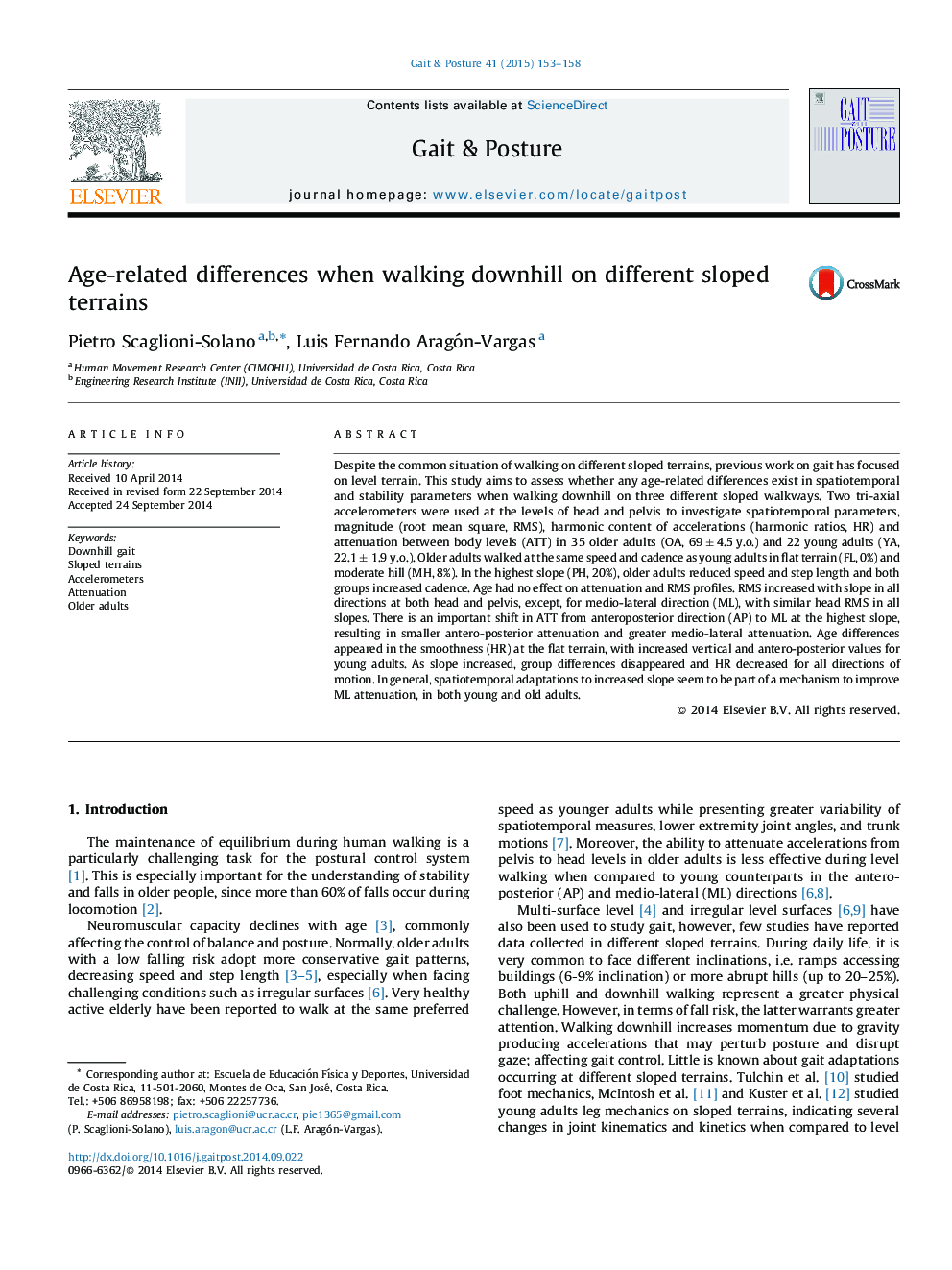| کد مقاله | کد نشریه | سال انتشار | مقاله انگلیسی | نسخه تمام متن |
|---|---|---|---|---|
| 6205686 | 1265627 | 2015 | 6 صفحه PDF | دانلود رایگان |
- Older adults reduce speed and step length, and increase cadence when walking downhill.
- Age has no effect on acceleration attenuation from pelvis to head and RMS profiles.
- As slope increases, a shift from anteroposterior to mediolateral attenuation occurs.
- Mediolateral attenuation is the main focus of postural control when walking downhill.
- Increased forward momentum when walking downhill impairs AP and ML smoothness.
Despite the common situation of walking on different sloped terrains, previous work on gait has focused on level terrain. This study aims to assess whether any age-related differences exist in spatiotemporal and stability parameters when walking downhill on three different sloped walkways. Two tri-axial accelerometers were used at the levels of head and pelvis to investigate spatiotemporal parameters, magnitude (root mean square, RMS), harmonic content of accelerations (harmonic ratios, HR) and attenuation between body levels (ATT) in 35 older adults (OA, 69 ± 4.5 y.o.) and 22 young adults (YA, 22.1 ± 1.9 y.o.). Older adults walked at the same speed and cadence as young adults in flat terrain (FL, 0%) and moderate hill (MH, 8%). In the highest slope (PH, 20%), older adults reduced speed and step length and both groups increased cadence. Age had no effect on attenuation and RMS profiles. RMS increased with slope in all directions at both head and pelvis, except, for medio-lateral direction (ML), with similar head RMS in all slopes. There is an important shift in ATT from anteroposterior direction (AP) to ML at the highest slope, resulting in smaller antero-posterior attenuation and greater medio-lateral attenuation. Age differences appeared in the smoothness (HR) at the flat terrain, with increased vertical and antero-posterior values for young adults. As slope increased, group differences disappeared and HR decreased for all directions of motion. In general, spatiotemporal adaptations to increased slope seem to be part of a mechanism to improve ML attenuation, in both young and old adults.
Journal: Gait & Posture - Volume 41, Issue 1, January 2015, Pages 153-158
